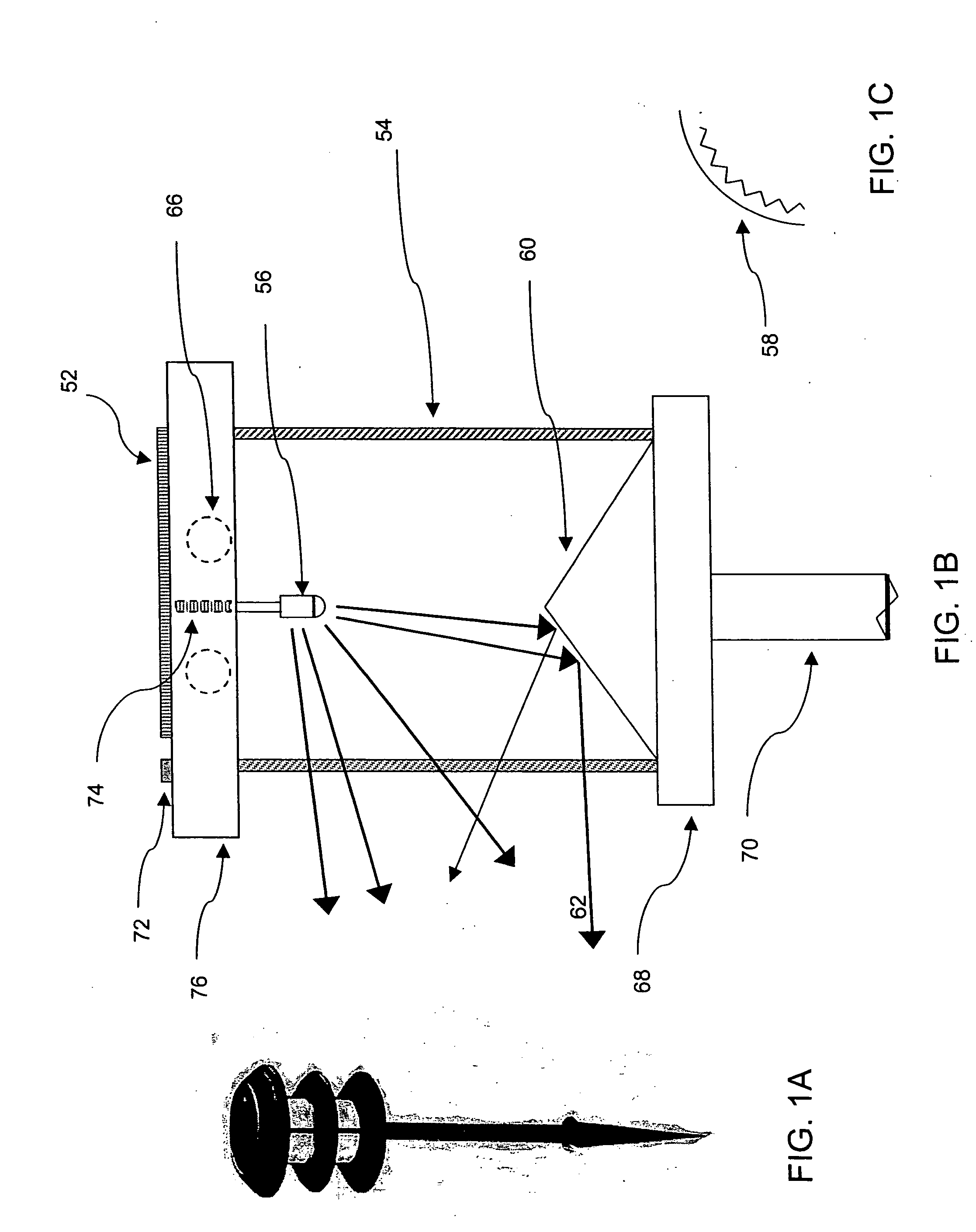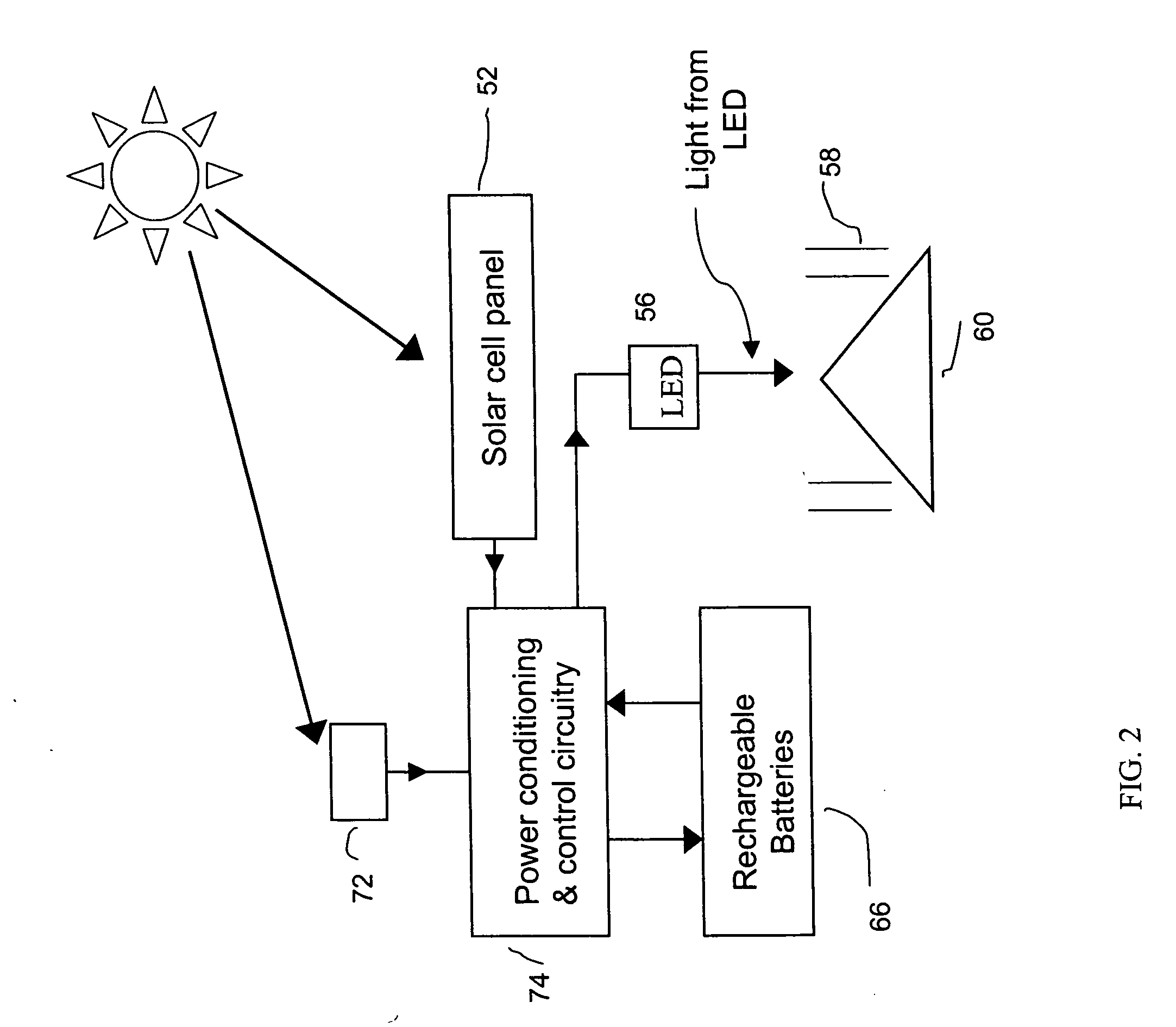Solar powered lamp
a solar energy and lamp technology, applied in the field of solar energy-powered lamps, can solve the problems of unpleasant direct viewing and little illumination, and achieve the effects of reducing brightness, reducing brightness, and substantial increases in apparent light outpu
- Summary
- Abstract
- Description
- Claims
- Application Information
AI Technical Summary
Benefits of technology
Problems solved by technology
Method used
Image
Examples
first preferred embodiment
[0019] A first preferred embodiment of the present invention can be described by reference to FIGS. 3-6. An important optical element added to the existing device described in the Background Section for the purpose of enhancing the light distribution is shown in FIG. 3. This is a clear, transparent ½-inch diameter sphere made from plastic or glass that forms a widely distributed bright image of the source LED 56 close to the surface of the sphere. In FIG. 4, a top view shows that 10 of these ½-inch spheres are arrayed around the circumference of the inner wall of the 2¼ inch diameter transparent cylindrical lens. A space just smaller than the diameter of a single sphere is left in the array, so that there is no difficulty in loading the group of 10 spheres into the housing. The spheres naturally array themselves in the correct position at the circumference of lens 54 by the action of gravity and the conical reflector 60. No additional attachment is needed or desired.
[0020] Each sph...
PUM
 Login to View More
Login to View More Abstract
Description
Claims
Application Information
 Login to View More
Login to View More - R&D
- Intellectual Property
- Life Sciences
- Materials
- Tech Scout
- Unparalleled Data Quality
- Higher Quality Content
- 60% Fewer Hallucinations
Browse by: Latest US Patents, China's latest patents, Technical Efficacy Thesaurus, Application Domain, Technology Topic, Popular Technical Reports.
© 2025 PatSnap. All rights reserved.Legal|Privacy policy|Modern Slavery Act Transparency Statement|Sitemap|About US| Contact US: help@patsnap.com



